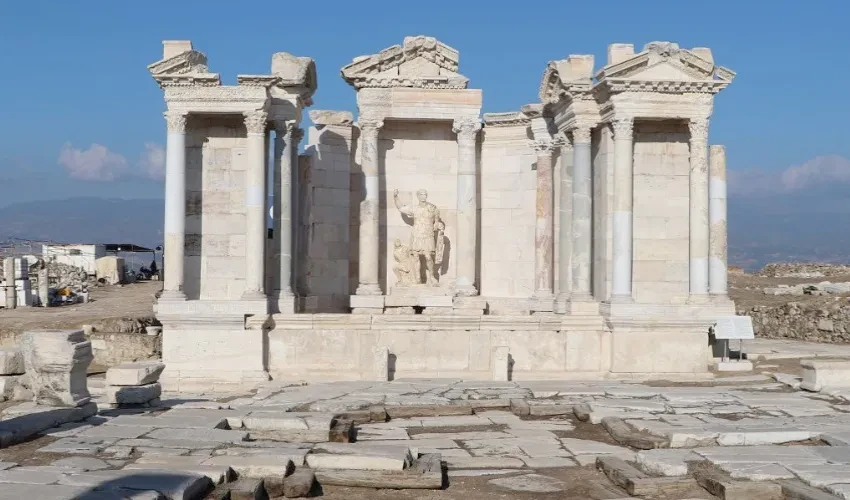Türkiye’s Laodicea unearths over 5,000 artifacts, gains UNESCO recognition

Archaeologists in the ancient city of Laodicea in the western Turkish province of Denizli have unearthed over 5,000 artifacts in 21 years and captivated local and international audiences.
Professor Celal Simsek led these efforts to make Laodicea a significant site on the UNESCO World Heritage Tentative List.
The rich historical legacy of Laodicea in Denizli, Türkiye

Laodicea’s history dates back to 5500 B.C. It became a prominent city during the Hellenistic Period when Seleucus Antiochus II founded it, naming it after his wife, Laodike. The city later fell under Roman control in 130-129 B.C.
Throughout its history, Laodicea experienced numerous earthquakes, leading to multiple reconstructions. It was finally abandoned after a severe earthquake during the reign of Emperor Phocas (602-610 C.E.).
Laodicea is located at a strategic crossroads connecting western, central, and southern Anatolia. This position made it a bustling hub of commerce and culture.
The city is also one of the Seven Churches mentioned in the Book of Revelation, enhancing its significance as a Christian pilgrimage site.
Architectural marvels and artifacts of Laodicea

Excavations have revealed a range of impressive structures. Laodicea boasts Anatolia’s largest ancient stadium, measuring 285 by 70 meters.
The site includes two theaters, four bath complexes, five agoras, five fountains, and monumental streets. Professor Simsek remarked, “Laodicea is one of the most visited archaeological sites in our country and globally recognized for its historical importance.”
Among the notable discoveries are the 1,750-year-old frescoed travertine blocks, the 1,906-year-old Emperor Marcus Ulpius Nerva Traianus statue, and the 2,000-year-old Trajan Fountain. Recently, archaeologists unearthed the head of Hygieia, the goddess of health, adding to the excitement.

“These statues reveal the presence of the Herophileion medical school in Laodicea,” said Professor Simsek. “They showcase the period’s fine workmanship and high artistic quality.”
Visitor surge, tourism impact
Interest in Laodicea has surged, especially after the lifting of COVID-19 restrictions. In 2023, the site attracted over 117,000 visitors, surpassing previous records. This year, Laodicea expects more than 100,000 tourists. “We saw a significant increase in visitors after the pandemic,” noted professor Simsek.
“Over 117,000 people explored the ancient city last year, and we anticipate even higher numbers this year,” the professor added.
Since 2015, Laodicea has seen a steady rise in annual visitor numbers:
- 2015: 62,624
- 2016: 33,660
- 2017: 41,834
- 2018: 49,947
- 2019: 91,478
- 2020: 28,244
- 2021: 43,784
- 2022: 98,394
- 2023: 117,586
- 2024 (Jan-Apr): 39,111
UNESCO recognition, ongoing work in Laodicea
Laodicea’s inclusion on the UNESCO World Heritage Tentative List highlights its global importance. The site covers approximately five square kilometers and features a well-preserved urban layout from the Hellenistic and Roman periods.
The city’s grid system of streets, monumental buildings and advanced infrastructure show its planning and architectural prowess.
In collaboration with the Ministry of Culture and Tourism, the Denizli Municipality supports continuous excavation and restoration efforts.
This partnership ensures year-round work, enabling significant progress in uncovering and preserving the ancient city’s treasures.
Laodicea’s rich history, architectural wonders, and recent discoveries make it a focal point for archaeologists and history enthusiasts alike.
The ongoing excavations promise to reveal even more hidden facets of this ancient metropolis, further cementing its place as a crucial archaeological site.



